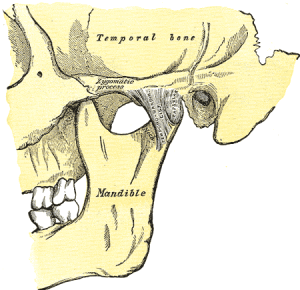 Commonly known as TMJ, temporomandibular joint pain affects over 10 million Americans and can involve difficulty chewing, jaw muscle stiffness and painful popping or clicking, according to the National Institute of Dental and Craniofacial Research.
Commonly known as TMJ, temporomandibular joint pain affects over 10 million Americans and can involve difficulty chewing, jaw muscle stiffness and painful popping or clicking, according to the National Institute of Dental and Craniofacial Research.
Although for some people the pain of TMJ goes away on its own, others develop long-term problems and need treatment to help their pain.
Here are five tips you can practice at home to help your TMJ symptoms.
Jaw Exercises
- Try opening your mouth as wide as you can without feeling pain, move your jaw to the right and hold for 10 seconds, do the same to the left and repeat five times.
- Massage the muscles around your jaw hinge in a downward motion.
Relaxation
Stress and anxiety are very common inducers of TMJ. Some people tend to clench their jaw when feeling stressed or anxious, which results in TMJ symptoms.
- Practice deep breathing. The best way to do this is to lie on your back, place your left hand on your stomach and right hand on your chest. Count to five to inhale, hold your inhale for two seconds, and exhale for five seconds.
- Stretch your spine. Interlock your hands behind your head and bend forward with straight legs so that your head is reaching for the floor. Stay in this position for at least ten seconds accompanied with awareness to breathing. This practice can deeply stretch and relax your spinal chord and reduce TMJ pain.
Vitamins and Minerals
Deficiencies in calcium and magnesium are found to be common in people suffering from TMJ. The International Dental Association conducted a study on 50 TMJ sufferers who added calcium and magnesium supplements to their routine and found pain relief in 70 percent of the participants.
- Magnesium rich food: Cashews, avocados, almonds soybeans, sesame butter, spinach, squash, sunflower seeds, rice, flaxseed.
- Calcium rich food: milk, banana, almond, spinach, coconut, yogurt.
Herbal Remedies
- Boswellia Complex: Extract of Boswellia olearesin containing an appropriate amount of boswellic acids can help maintain healthy joint tissue. Top quality Boswellia may do this by addressing the release of compounds called leukotrienes (involved in the body’s normal inflammation response). It may also help maintain the integrity of the cartilage.
- Kava Forte: If your TMJ is due to stress or anxiety, Kava can be used to calm your nervous system and in turn, reduce TMJ symptoms caused by anxiety like a stiff jaw.
- Salegisic: Salegisic is a unique extract of Willow Bark, standardized for the important compound salicin. Willow Bark is the traditional herbal remedy that has been used for thousands of years. As early as 200 BC, Hippocrates (revered as the father of modern medicine) used the leaves and bark from the Willow Tree. Native Americans also used Willow Bark.
Traditionally, one ounce (28 grams) of Willow Bark was boiled in a pint of water and the liquid consumed over the period of a day. Remarkable, this dosage is almost identical to the clinically proven daily dose of 32 grams of Willow Bark that MediHerb recommends.
All these herbal products can be purchased by patient’s of doctor carrie by registering for Patient Direct.
https://www.standardprocess.com/Patient-Direct#.Va0ZphNViko
Acupuncture
Acupuncture has proven to be effective in treating TMJ in a number of ways. In Traditional Chinese Medicine, TMJ often represents an imbalance in the liver and gallbladder meridians which traverse the areas usually associated with TMJ pain. Acupuncture points focused on these areas can stimulate the healing process, and return the meridians and the body back to balance, improving your TMJ symptoms.
Sources:
http://umm.edu/health/medical/altmed/condition/temporomandibular-joint-dysfunction
http://home-cure.net/home-remedies-exercises-natural-cures-tmj-treatment/

